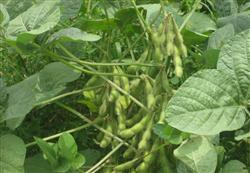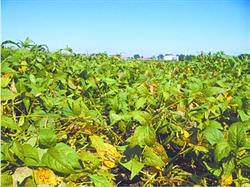Spring sowing and fertilization hint: effective application of potassium to promote high yield of spring maize

With the increase of yield and the increase of potassium requirement, with the increase of maize yield, the supply of soil available potassium is required to increase in the key growth period. The results of many long-term positioning experiments of corn show that when the yield increases by 10% to 20%, the potassium uptake increases accordingly. The stable high yield can be maintained by properly increasing the potassium content of maize tissue. Although the content of soil available potassium in northern spring sowing corn area is at a high level (such as 70mg / kg and 130mg / kg), the application of potassium fertilizer can still increase yield. Especially in some soils with medium content of available potassium and small capacity of slowly available potassium, it is necessary to consider the application of potassium fertilizer in high-yield fields. Therefore, when taking the yield target as the main basis for recommending potassium application, we should pay attention not only to increase the application of potassium fertilizer to the soil with low available potassium content is a necessary measure to ensure high yield, but also to pay attention to some soil available potassium level even when the level is medium. The application of appropriate amount of potassium fertilizer also has a good effect. With the increase of planting density, the potassium requirement is increased. In the current high-yield cultivation of hybrid maize, the yield is greatly increased by increasing density, and at the same time, the potassium uptake of high-density plants to farmland is also significantly increased. Therefore, when the density increases, if there is no corresponding application of potassium fertilizer or improve the effectiveness of soil potassium, it is difficult for crops to absorb potassium, and the yield may decrease or fail to reach the ideal level. However, after the application of 5kg / mu of potash fertilizer, the yield increased rather than decreased. Especially in the corn plots with low available potassium content and irrigation conditions. Therefore, in the recommended fertilization of corn, in order to adapt to the higher density and yield level, the amount of potassium application should be appropriately increased than the conventional amount. Balance of nitrogen and potassium, increase of potassium requirement in close planting and high yield maize cultivation, it is key to coordinate the balanced supply of potassium fertilizer and nitrogen fertilizer. In general, more nitrogen is applied in order to achieve the goal of high yield, which aggravates the infection rate of plant diseases and insect pests such as stem rot, root rot, bacterial wilt and so on. If the supply of potash fertilizer is not increased accordingly, symptoms of nitrogen and potassium imbalance will be formed. Potassium deficiency first weakened the bending strength and epidermis thickness of maize stems and leaves, which not only increased the possibility of lodging, but also increased the sensitivity of maize to insect pests and diseases. As we all know, among the nutrient elements, nitrogen and potassium have great effects on the disease resistance of maize, but their action directions are different. Too much nitrogen will often increase the sensitivity of maize to disease, while the effect of potassium is the opposite, which can increase the disease resistance of crops. So, how to diagnose potassium deficiency in the field? Lack of potassium should be how to supplement potassium? When spring corn enters the jointing stage, the growth period from small trumpet mouth to large trumpet mouth is its rapid growth period, and the demand for nitrogen, phosphorus and potassium has increased. Usually in the actual production, we are used to only applying nitrogen fertilizer but not paying attention to potassium fertilizer, but in the high-yield and close planting cultivation of spring maize, whether topdressing is needed or not, as long as we ask the corn growing in the field and observe the plant growth status, we may get the answer. That is to often go to the corn field at 90 o'clock in the morning, especially in windy weather. If you see the leaves of spring corn wilting in the morning, it will tell you, "I am deficient in potassium." Because for the farmland that is not in urgent need of irrigation, normal and robust corn plants will not wilt leaves in the morning, but it is normal to wilt after noon. Because potassium can affect the stomatal closure of leaves and increase the water retention function of plants. When potassium is deficient, the stomatal resistance is large and can not be closed normally, which leads to serious water loss in maize and wilting phenomenon. At this time, potash fertilizer must be applied to remedy it. The most feasible measure is to topdressing 5kg potassium chloride. After ditch application or hole application, the soil can be restored.
- Prev

Drought-resistant cultivation techniques of Spring sowing Maize
In recent years, with the increase of the area of spring sowing corn, maize dwarf mosaic virus has become the main disease of spring sowing maize. First, symptom identification: maize dwarf mosaic virus disease is susceptible in the whole growing period of maize, especially in the seedling stage. The disease can be seen in the three-leaf stage of corn, at first.
- Next

How to prevent soybean lodging?
Lodging at the later stage of soybean growth affects soybean yield, quality and harvest. The reason should first consider whether the variety is right. Some varieties have higher plants and thinner stems, which are suitable for plots with medium and low water and fertilizer, and belong to barren varieties. Plant density is too large, field ventilation and poor light transmission, plant stem thin, high...
Related
- The first cup of black tea in spring, the flavor and history of tea gardens in Kenya, Africa
- The computer can not only choose potatoes, but also grow tea rice. AI will grow winter oolong tea champion.
- It is not only the inflated tea bitten by insects, but also engraved with the four seasons tea in Beipu.
- The Oriental Beauty Tea Festival in Zhuxian County takes the stage at the weekend to experience the plus-size feast of oil tea.
- & quot; Oriental Beauty Tea & Exploration of Emei in Hsinchu, the hometown of quot;
- The new variety of strawberry "Tainong 1" dessert is the first choice with mellow aroma. Crimson gorgeous
- History of Tea in Taiwan: from Wild Inner Mountain to Export Tea Garden
- Two types of Taiwan Oriental Beauty Black Tea won the British three-Star Award for Childhood Tea Xiang Zhang Jiaqi changed from pilot to champion tea maker.
- Banana species and varieties: the planting history of Taiwan Xianren banana and dwarf banana is long, is banana disease resistant?
- Coffee planting Technology: Qianjie Coffee from Seedling to harvesting

